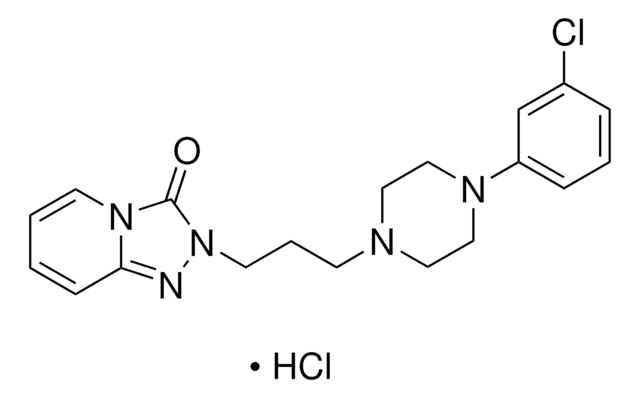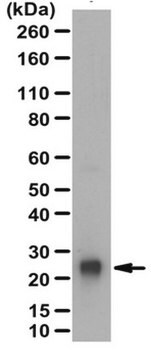NE1013
Anti-PGP9.5 (176-191) Rabbit pAb
liquid, Calbiochem®
Synonim(y):
Anti-Neuron Cytoplasmic Protein 9.5, Anti-Ubiquitin Thiolesterase L1, Anti-UCHL1
About This Item
Polecane produkty
pochodzenie biologiczne
rabbit
Poziom jakości
forma przeciwciała
serum
rodzaj przeciwciała
primary antibodies
klon
polyclonal
Postać
liquid
zawiera
≤0.1% sodium azide as preservative
reaktywność gatunkowa
porcine, human, rat, mouse
producent / nazwa handlowa
Calbiochem®
warunki przechowywania
OK to freeze
avoid repeated freeze/thaw cycles
izotyp
IgG
Warunki transportu
wet ice
temp. przechowywania
−20°C
docelowa modyfikacja potranslacyjna
unmodified
informacje o genach
human ... UCHL1(7345)
Powiązane kategorie
Opis ogólny
Immunogen
Zastosowanie

Immunoblotting (1:1000)
Frozen Sections (1:2000, fluorescence)
Ostrzeżenie
Postać fizyczna
Rekonstytucja
Komentarz do analizy
Mouse dorsal root nerve fibers
Inne uwagi
Tezel, E., et al. 2000. Clin. Cancer Res.6, 4764.
Immunofluorescence protocol
Care should be taken so that the incubation solutions do not evaporate. It is recommended that incubations be performed in a humidified chamber to prevent evaporation. Washing steps should be done in large volumes of phosphate buffered saline (PBS).
1. Warm slides to room temperature.
2. Re-hydrate with PBS for 10-15 min.
3. Remove PBS and incubate in blocking buffer (PBS containing 3% normal donkey serum, 1% bovine serum albumin, 0.3% Triton™ X-100 detergent, and 0.01% NaN3, pH 7.45) for 1 h at room temperature.
4. Dilute primary antibody in blocking buffer. Store diluted antibody at 4°C until use.
5. Remove blocking buffer and add diluted primary antibody.
6. Incubate with primary antibody at 4°C for 18-48 h.
7. Remove primary antibody and wash three times for 10 min with PBS.
8. Dilute secondary antibody in blocking buffer to appropriate dilution (follow manufacture′s recommendation). Store at 4°C until use.
9. Incubate slides in diluted secondary antibody solution for one hour at room temperature.
10. Remove secondary antibody and wash three times for 10 min with PBS.
11. Coverslip slides with appropriate mounting media.
Informacje prawne
Nie możesz znaleźć właściwego produktu?
Wypróbuj nasz Narzędzie selektora produktów.
Kod klasy składowania
10 - Combustible liquids
Klasa zagrożenia wodnego (WGK)
WGK 1
Certyfikaty analizy (CoA)
Poszukaj Certyfikaty analizy (CoA), wpisując numer partii/serii produktów. Numery serii i partii można znaleźć na etykiecie produktu po słowach „seria” lub „partia”.
Masz już ten produkt?
Dokumenty związane z niedawno zakupionymi produktami zostały zamieszczone w Bibliotece dokumentów.
Nasz zespół naukowców ma doświadczenie we wszystkich obszarach badań, w tym w naukach przyrodniczych, materiałoznawstwie, syntezie chemicznej, chromatografii, analityce i wielu innych dziedzinach.
Skontaktuj się z zespołem ds. pomocy technicznej







